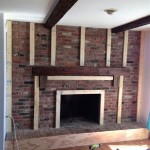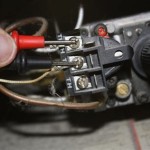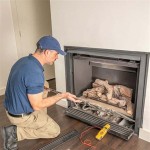Plazmafire Wall Mounted Ventless Gas Fireplace 31: An In-Depth Exploration
The Plazmafire Wall Mounted Ventless Gas Fireplace 31 represents a modern approach to home heating and ambiance creation. This appliance offers a combination of aesthetic appeal and functional heating capacity, all without the need for complex venting systems. This article will provide a comprehensive overview of the Plazmafire Wall Mounted Ventless Gas Fireplace 31, covering its key features, benefits, installation considerations, safety aspects, maintenance requirements, and the technology behind its ventless operation.
Design and Aesthetics of the Plazmafire 31
The Plazmafire 31 is primarily designed with a focus on contemporary aesthetics. Its wall-mounted configuration allows for flexible placement within a room, freeing up floor space and creating a focal point. The sleek, minimalist design often incorporates materials like tempered glass and brushed stainless steel, which contribute to its modern appeal. The firebox itself is engineered to maximize the visible flame area, creating a visually captivating display. The Plazmafire 31 is intended to seamlessly integrate into existing home decor, providing both warmth and visual interest.
Furthermore, manufacturers often offer variations in design to cater to different stylistic preferences. These might include options for different frame finishes, such as black, silver, or bronze, allowing homeowners to customize the fireplace to match their existing interior design scheme. The flame appearance itself can be adjusted on some models, offering control over flame height and intensity, thereby allowing further personalization of the ambiance.
The dimensions of the Plazmafire 31, which is 31 inches wide, are carefully considered to be both visually impactful and practical for various room sizes. While the emphasis is on visual appeal, the design also considers functional aspects such as ease of cleaning and long-term durability. The use of high-quality materials ensures that the fireplace can maintain its aesthetic appeal over time, even with regular use.
Key Features and Functionality
The Plazmafire Wall Mounted Ventless Gas Fireplace 31 boasts a range of features designed for ease of use and optimal performance. One of the most significant features is its ventless operation, which eliminates the need for a chimney or venting system. This is achieved through a highly efficient combustion process that minimizes emissions of carbon monoxide and other harmful gases. The fireplace is typically equipped with an Oxygen Depletion Sensor (ODS), which automatically shuts off the gas supply if oxygen levels in the room become too low. This is a critical safety feature for ventless gas appliances.
Another common feature is electronic ignition, which simplifies the process of starting the fireplace. Instead of requiring a match or lighter, a simple push of a button or flick of a switch ignites the gas flame. Many models also include a remote control, allowing users to adjust the flame height, heat output, and even set timers from the comfort of their seats. This enhances convenience and allows for precise control over the fireplace's operation.
The heating capacity of the Plazmafire 31 is typically measured in British Thermal Units (BTUs). The BTU rating indicates the amount of heat the fireplace can produce per hour. A higher BTU rating generally means the fireplace can heat a larger space. The Plazmafire 31 typically offers a sufficient BTU output for heating a small to medium-sized room efficiently. However, it's important to consider the room's insulation and other factors when determining if the fireplace is suitable for a particular space.
Beyond these primary features, some models include additional functionalities such as adjustable thermostats, which allow for maintaining a consistent room temperature. Also, decorative features like realistic artificial logs or glass beads are often included to enhance the visual appeal of the flame. The inclusion of these logs or beads doesn't affect the heating performance, but further contributes to ambiance.
Installation and Safety Considerations
The installation of a Plazmafire Wall Mounted Ventless Gas Fireplace 31 generally requires basic knowledge of plumbing and electrical systems. It is highly recommended that installation be performed by a qualified technician or professional to ensure safe and compliant operation. While the ventless design eliminates the need for venting, proper gas line connections and electrical wiring are crucial for safe operation.
Before installation, it is essential to check local building codes and regulations regarding the use of ventless gas appliances. Some jurisdictions may have restrictions on their use or require specific safety measures to be implemented. It's also crucial to ensure that the room where the fireplace is installed has adequate ventilation, even though the appliance is ventless. Opening a window or door slightly can help maintain healthy air quality in the room.
During installation, the fireplace must be securely mounted to the wall according to the manufacturer's instructions. This typically involves using mounting brackets and hardware that are designed to support the weight of the appliance. Proper alignment and leveling are also essential to ensure that the fireplace operates safely and efficiently. Gas line connections should be carefully inspected for leaks using a gas leak detection solution after installation.
Another critical safety aspect is the placement of the fireplace away from flammable materials. Clearances specified by the manufacturer must be strictly adhered to when deciding on the installation location. These clearances specify the minimum distance that the fireplace must be kept away from walls, furniture, curtains, and other combustible materials. Failure to comply with these clearances can create a fire hazard. Periodic inspections of the gas line connections, burner assembly, and ODS system should also be conducted to ensure that the fireplace is functioning safely and correctly.
Carbon monoxide detectors are a necessity in any home using a ventless gas appliance. They provide an early warning of potentially dangerous carbon monoxide levels, allowing occupants to evacuate the premises if necessary. The detectors should be placed according to manufacturer's recommendations and tested regularly to ensure that they are functioning correctly. It is also necessary to understand the symptoms of carbon monoxide poisoning, which can include headaches, dizziness, nausea, and confusion. If any of these symptoms are present, it's crucial to seek fresh air immediately and contact emergency services.
Maintenance and Long-Term Care
Proper maintenance is essential for ensuring the long-term performance and safety of the Plazmafire Wall Mounted Ventless Gas Fireplace 31. Regular cleaning and inspections can prevent malfunctions and extend the lifespan of the appliance. The frequency of maintenance will depend on the usage patterns and environmental conditions. However, a general guideline is to perform a thorough cleaning and inspection at least once a year.
Cleaning the fireplace involves removing dust, debris, and any other contaminants that may have accumulated on the burner assembly, gas lines, and exterior surfaces. A soft brush or vacuum cleaner can be used to remove loose debris. Stubborn stains or buildup can be cleaned with a mild detergent and water solution. Ensure all cleaning agents are completely removed before operating the fireplace. The glass front of the fireplace should be cleaned with a glass cleaner specifically designed for fireplace glass. Avoid using abrasive cleaners, as they can scratch or damage the glass.
The burner assembly should be inspected for any signs of corrosion, damage, or blockage. The burner ports should be clear of any obstructions to ensure proper combustion. If necessary, the burner assembly can be carefully disassembled and cleaned following the manufacturer's instructions. Always turn off the gas supply before performing any maintenance on the burner assembly.
The gas lines should be inspected for leaks or damage. Check all connections using a gas leak detection solution. If any leaks are detected, immediately turn off the gas supply and contact a qualified technician for repairs. The ODS system should also be inspected to ensure that it is functioning correctly. This involves testing the sensor to verify that it shuts off the gas supply when oxygen levels are low. Replace the ODS sensor if it is not functioning correctly.
In addition to these routine maintenance tasks, it's also important to follow the manufacturer's recommendations for specific maintenance requirements. The owner's manual will provide detailed instructions on how to properly maintain the fireplace and address any potential issues. By following these guidelines, homeowners can ensure that their Plazmafire Wall Mounted Ventless Gas Fireplace 31 operates safely and efficiently for many years.
Ventless Technology: How it Works
The technology behind ventless gas fireplaces relies on highly efficient combustion to minimize the production of harmful emissions. Unlike traditional gas fireplaces that require a chimney or venting system to exhaust combustion byproducts, ventless fireplaces are designed to burn gas more completely, reducing the amount of carbon monoxide, nitrogen dioxide, and other pollutants released into the air.
The key to this efficient combustion is the design of the burner assembly. Ventless fireplaces typically use a specialized burner that mixes gas and air in a precise ratio, ensuring that the gas burns cleanly and completely. The burner is also designed to maximize the surface area of the flame, which further promotes efficient combustion.
The Oxygen Depletion Sensor (ODS) is an essential safety component of ventless gas fireplaces. The ODS constantly monitors the oxygen levels in the room. If the oxygen levels drop below a certain threshold, which could indicate a buildup of combustion byproducts, the ODS automatically shuts off the gas supply. This prevents the fireplace from continuing to operate in an unsafe environment. The ODS system is designed to be highly sensitive and reliable, providing a crucial layer of safety for ventless gas fireplaces.
Despite the efficient combustion process, ventless gas fireplaces still produce small amounts of carbon monoxide and other emissions. Therefore, it's crucial to ensure that the room where the fireplace is installed has adequate ventilation. Opening a window or door slightly can help to maintain healthy air quality in the room.
While ventless technology has improved significantly in recent years, it's important to understand its limitations. Ventless gas fireplaces are not suitable for all homes or all situations. They should only be used in rooms that meet the manufacturer's requirements for size and ventilation. It's also essential to follow all safety guidelines and maintenance recommendations to ensure safe and efficient operation. Regular maintenance and adherence to safety guidelines are crucial for ensuring the long-term performance and safety of the appliance.

Gaskamin Whd31 Napoleon Fireplaces Modern Geschlossene Feuerstelle Wandmontiert

Napoleon Plazmafire 31 Linear Gas Fireplace Model Whd31

Napoleon Fireplaces Plazmafire 31 Whd31n Natural Gas From Fernie Fireplace Appliances

Fireplaces Gas Napoleon Whvf31 Plazmafire Wall Hanging Vent Free Fireplace

Napoleon Plazmafire 31 Vent Free Linear Gas Whvf31n North Country Fire

Napoleon Plazmafire 31 Ventless Natural Gas Fireplace Fireside Hearth And Leisure

Napoleon Plazmafire Whd31nsb Wall Hanging Linear Gas North Country Fire

Plazmafire Vf31 Vent Free Gas Fireplace

Napoleon Plazmafire Whd31nsb Wall Hanging Linear Gas North Country Fire

Napoleon Plazmafire 31 Vent Free Linear Gas Whvf31n North Country Fire
Related Posts








